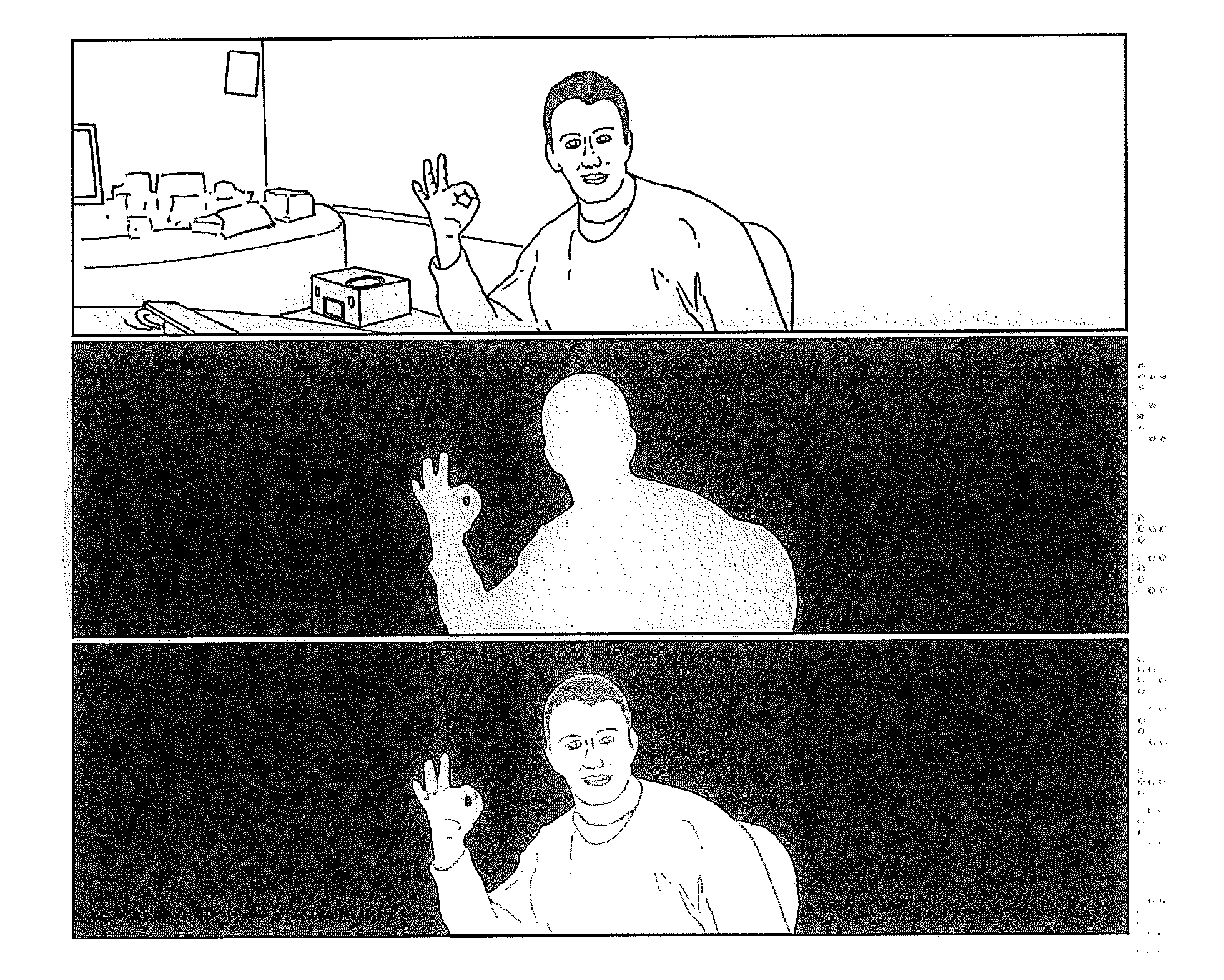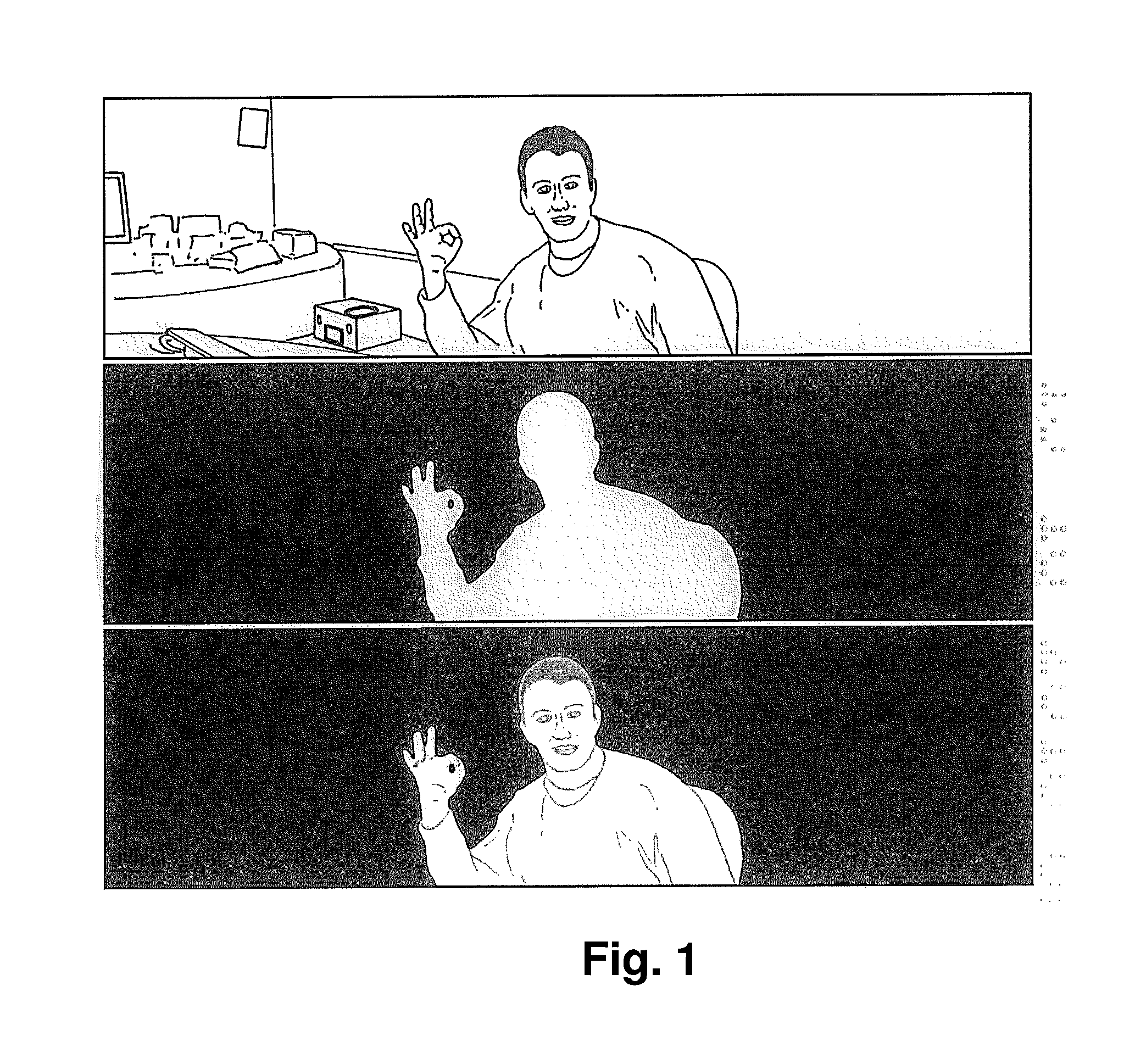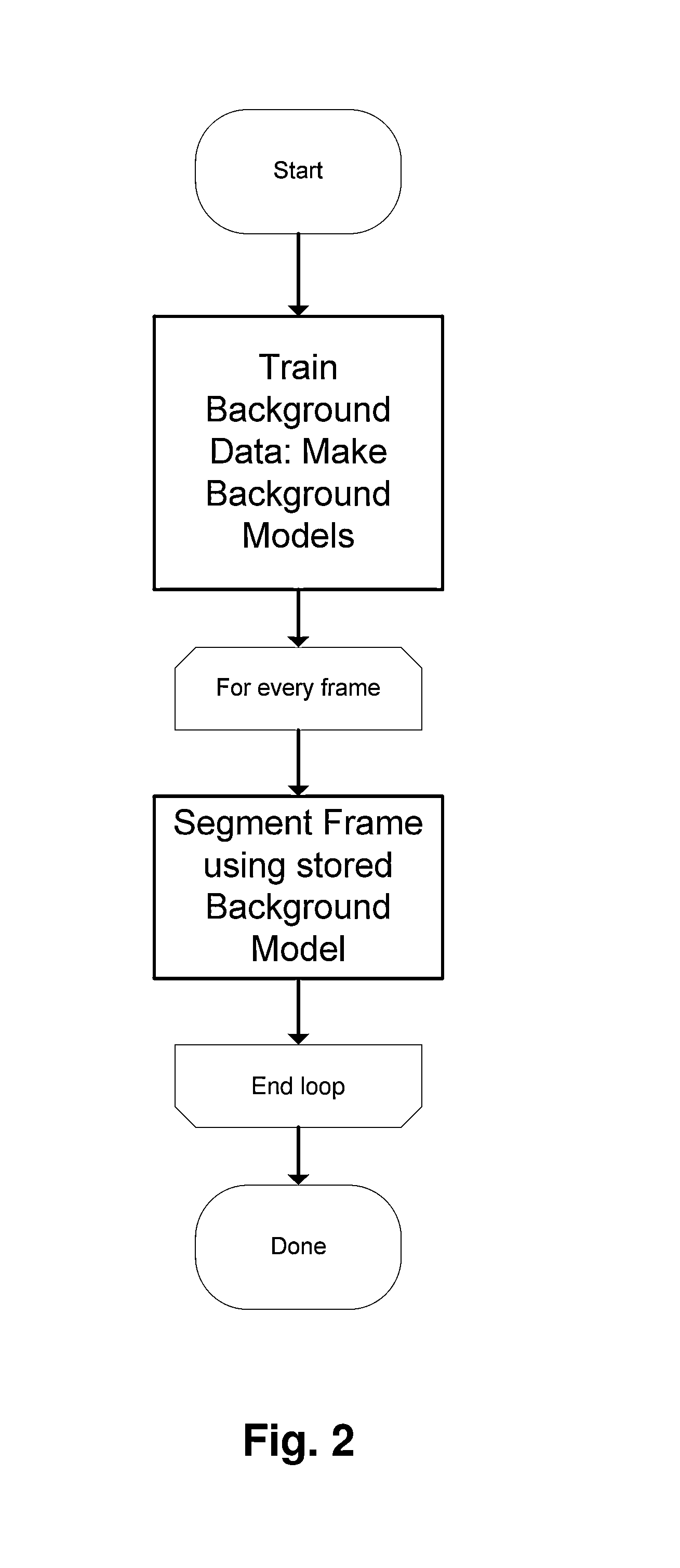Method and system for real-time images foreground segmentation
a real-time image and foreground segmentation technology, applied in image analysis, image enhancement, instruments, etc., can solve problems such as poor noise and shadow robustness, wrong segmentation, and difficult to exploit gpus
- Summary
- Abstract
- Description
- Claims
- Application Information
AI Technical Summary
Benefits of technology
Problems solved by technology
Method used
Image
Examples
Embodiment Construction
[0019]It is necessary to offer an alternative to the state of the art which covers the gaps found therein, overcoming the limitations expressed here above, allowing having a segmentation framework for GPU enabled hardware with improved quality and high performance.
[0020]To that end, the present invention provides, in a first aspect, a method for real-time images foreground segmentation, comprising:[0021]generating a set of cost functions for foreground, background and shadow segmentation classes, where the background and shadow segmentation costs are based on chromatic distortion and brightness and colour distortion, and where said cost functions are related to probability measures of a given pixel or region to belong to each of said segmentation classes; and[0022]applying to the pixels of an image said set of generated cost functions.
[0023]The method of the first aspect of the invention differs, in a characteristic manner, from the prior art methods, in that it comprises, in additi...
PUM
 Login to View More
Login to View More Abstract
Description
Claims
Application Information
 Login to View More
Login to View More - R&D
- Intellectual Property
- Life Sciences
- Materials
- Tech Scout
- Unparalleled Data Quality
- Higher Quality Content
- 60% Fewer Hallucinations
Browse by: Latest US Patents, China's latest patents, Technical Efficacy Thesaurus, Application Domain, Technology Topic, Popular Technical Reports.
© 2025 PatSnap. All rights reserved.Legal|Privacy policy|Modern Slavery Act Transparency Statement|Sitemap|About US| Contact US: help@patsnap.com



